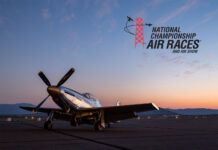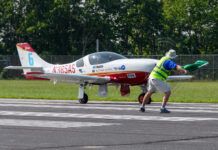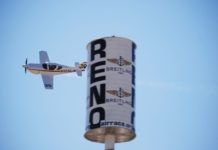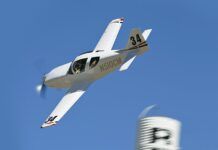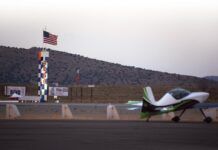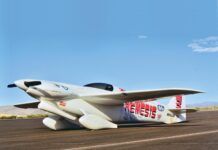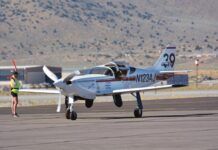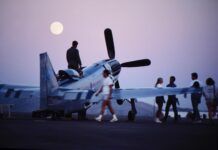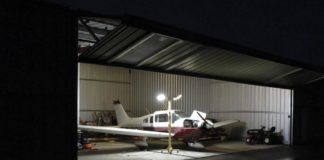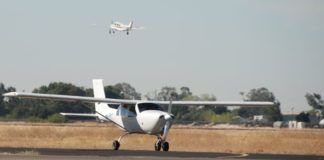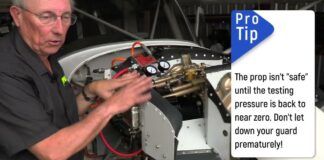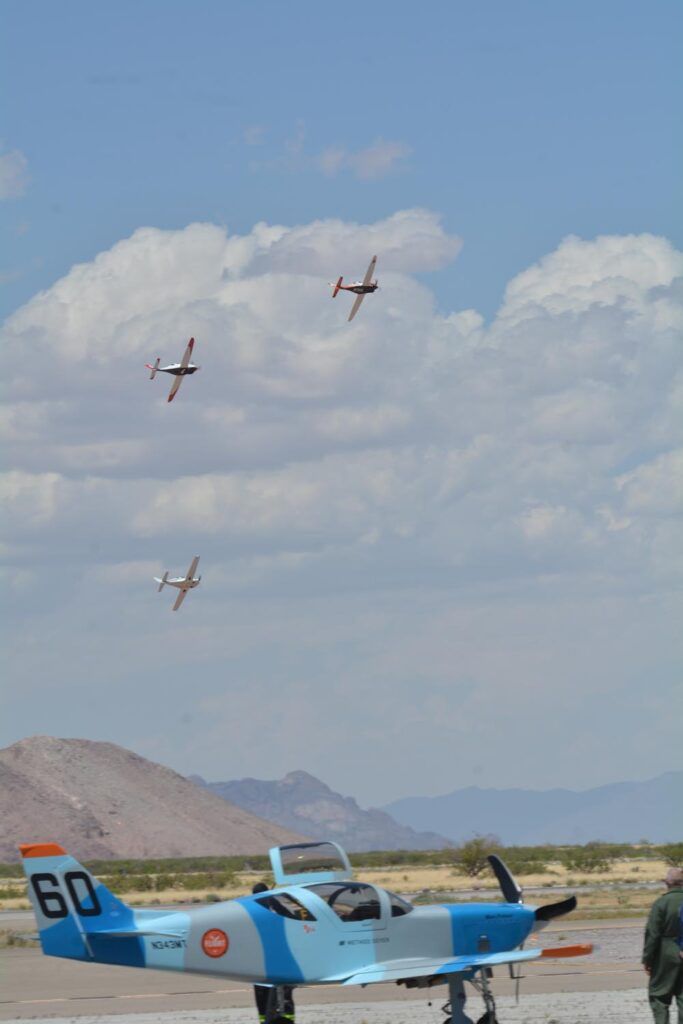
They’re already going 350 mph down on the deck in Las Cruces, New Mexico and there is much more in the works.
To begin with the news, Sport Class air racing held a four-day Pylon Racing Training Camp at Las Cruces International this last weekend. The invitation-only, non-spectator event allowed Sport Class pilots to extend their racing credentials for the coming year as well as giving the Sport Class a chance to develop their ground-side logistics.
Both those logistics and racing credentials will prove handy next October 17-20, 2024 at the just announced Las Cruces Air & Space Expo and Air Races. The upcoming four day event highlights the on-the-boil enthusiasm for aviation events in New Mexico and Las Cruces in particular, an enthusiasm built in conjunction with the Sport Class. The city and racers already collaborated on a successful October 2023 airshow and demonstration race and it’s clear everyone is ready for more.
Details on the October 2024 event are of course still in development, but include multiple Sport pylon air races, conventional air show acts plus a large number of ground-based exposition displays.
To support the various levels of Sport racing—Medallion, Bronze, Silver and Gold—two additional pylon race courses were built prior to the PRTC, bringing the total number of courses at Las Cruces to three. The course used for the October 2023 demonstration race is the medium length track, with a new, shorter course inside it and a larger, outer layout also sharing a few pylons with the original course. The new large 7.50 mile track is nominally designed for 425 mph action, so Sport’s current fastest movers can run all-out on it. After watching the Training Camp laps we believe the outer course could handle higher speeds, and would not be surprised if faster aircraft could be accommodated on it.

The new inner course measures 4.00 miles in length and is rated for 275 mph; the original medium course is 6.45 miles and comfortably handles 325 mph lap speeds.
Certifying these courses with the FAA was another reason for last weekend’s Training Camp. The FAA observing team on site at Las Cruces told us there were no show stoppers, so final approval is expected shortly. We’re guestimating in about a month, but well in advance of next October’s event in any case.
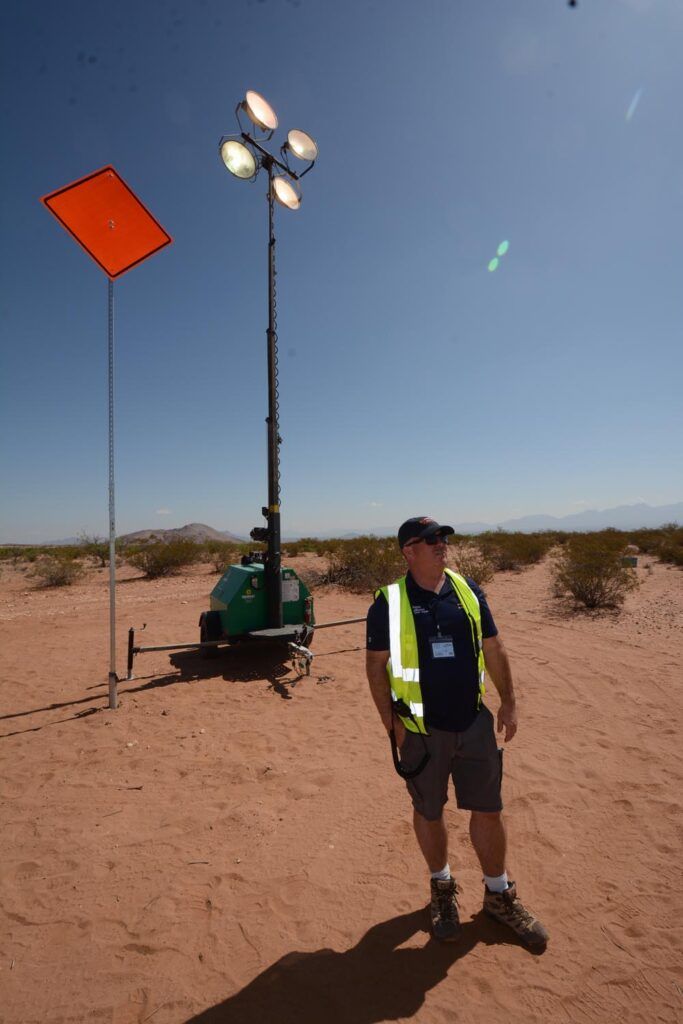
All of Las Cruces’ race courses deliver the contestants in a level or near-level attitude starting down the show line (spectator’s left), with the planes gently banking toward the first turn just a tick past the home pylon. Meaning by the spectator’s right there’s a good view of the planes banking away. The entire course is visible from the general admission area; a good thing as there are no grandstands but they would be a plus. There is a conservatively long distance between the crowd and the racers (a bit more than at Stead Field). And like anywhere, the smallish Sport race planes get distant when on the backside of the course but an interested spectator can follow all the action.
On Saturday, the final day of the PRTC, the fastest Sport racers ran the short inner course leading to a bit more aggressive turning and a hint of that delicious, rising propeller and engine noise as the planes arc onto the home straight. Sweet.
Approximately 20 aircraft and pilots completed the Training Camp, ranging from relatively stock RV-6’s to the well-known 400 mph Gold racers Jeff LaVelle who tooled around in a stock Glasair III and sparring partner Andrew Findlay in his instantly recognizable orange, black and white Lancair Super Legacy. Of course, no one turned the wick up much as it was just practice, plus the first two days were devoted to formation flying drills at altitude away from the airport. Only on Friday and Saturday was the field NOTAM’ed closed and the action brought down on the courses. Starting, lapping, mayday and re-joins were the main activities.
No rookies were invited as the Sport Class is taking a deliberately cautious approach to ramping up their racing series. Not wanting to break in a new venue with new pilots, they’re populating their first few public events with experienced racers only. New pilots and planes are definitely welcome, but not for the first public event.
This conservatism runs deep in the Sport class. They’re cognizant pylon air racing is at a turning point, and having been interested in taking air racing forward for several years already they understand new ground rules regarding risk, insurance, regulatory oversight, spectator interest and media coverage are in play. So it’s important to take a measured approach while re-establishing the sport.

Nowhere is this more important than in obtaining insurance. When racing ended at Reno last year the final insurance underwriter in the air racing sphere quit the space. Thus, the Sport Class has been putting on its demonstration races in Madras, Oregon and Las Cruces to show the few underwriters interested but still wary of pylon racing that it can be done with low risk to those watching. Therefore, as of today there is still no insurance for wing-to-wing racing at the upcoming Las Cruces event, but there is still a good chance insurance will be signed and the races unleashed in October. If so, you’ll hear about it here first; if not Sport Class says they’ll hold unrestricted, single-plane qualifying, followed by a demonstration race. Obviously we’re pulling for an unfettered contest of speed.
Everyone enjoyed the weather during the PRTC as the often feisty spring winds remained calm in the morning and not overly energetic in the afternoon. The field elevation at KLRU is 4,457 ft, making the high desert air distinctly dry with temperatures ranging from blessedly cool mornings to a not-too-hot, dry 90-degree F at the peak of the afternoon. There were no incidents, but one mechanical casualty; Peter Balmer suffered a metal-making starter drive in the newly-overhauled Continental in his-new-to-him Super Legacy (Race 44) most recently owned by Lynn Farnsworth. Thus, Peter spent PRTC dismounting his engine and crating it for shipping.
We returned from the PRTC appreciative of the Sport Class’s professional approach. Lead by Bill Beaton of the umbrella Sport Air Racing Council and Sport Class president Tim Slater it’s clear the Sport Class is building the structure and culture keeping pylon air racing pointed into the wind.


